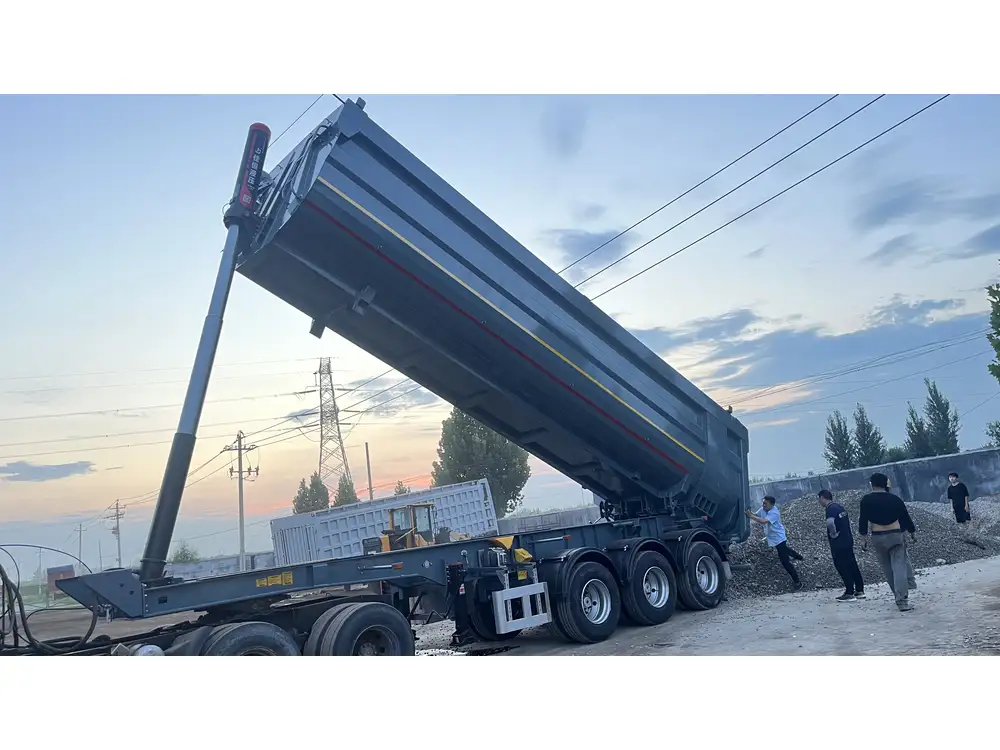Dump trailers are an essential piece of equipment in the construction, landscaping, and waste management industries. Whether you’re transporting gravel, dirt, construction debris, or other loads, ensuring that your dump trailer rides correctly is crucial for both safety and efficiency. In this guide, we will dissect the intricacies of how a dump trailer should ride, focusing on its design, optimization for load distribution, and maintenance considerations.
The Anatomy of a Dump Trailer
Understanding the key components of a dump trailer can greatly enhance your ability to manage it effectively. Here’s a breakdown of the essential parts:
| Component | Description |
|---|---|
| Chassis | The frame that supports the trailer and its components. |
| Axles | Responsible for supporting the trailer’s weight and allowing for motion. |
| Suspension | Absorbs shocks and provides stability while traveling. |
| Bed | The area of the trailer where the load is placed. |
| Lift Mechanism | Operates the hydraulic or electric system to dump the load. |
| Tires | Designed to handle heavy loads and offer traction. |
Load Distribution

Importance of Load Distribution
Load distribution is critical for maintaining stability and preventing accidents on the road. An improperly loaded dump trailer can sway, tip over, or cause the towing vehicle to lose control. Here are key aspects to consider:
- Center of Gravity: Ensure that heaviest items are placed towards the front, near the axle, to lower the center of gravity.
- Weight Limits: Always adhere to the manufacturer’s weight specifications to avoid overloading.
Tips for Effective Load Distribution
Balanced Loading: Distributing the weight uniformly across the trailer bed can significantly enhance stability. A good rule of thumb is to keep the load within the first two-thirds of the trailer length.
Use of Tarps: If transporting loose materials like sand or gravel, using a tarp can prevent spillage and improve aerodynamics.
Secure the Load: Use straps or chains to ensure that the load does not shift during transport, which can lead to uneven weight distribution.
Visualizing Load Distribution: A Simple Chart
The following chart outlines ideal load placements based on different materials:
| Material Type | Ideal Placement |
|---|---|
| Gravel | Front to middle |
| Dirt | Middle |
| Concrete Debris | Evenly spread |
| Loose Fill | Stay within rear half |

Riding Dynamics: How Should a Dump Trailer Ride?
The Role of Suspension
The suspension system plays a pivotal role in ensuring a dump trailer rides smoothly. Here’s how it influences the ride:
- Shock Absorption: Quality suspension systems minimize the shock of bumps and irregularities in the road, providing a smoother ride.
- Weight Transfer: A well-designed suspension helps in the even transfer of weight, ensuring stability during travel.
Ideal Towing Techniques
The manner in which the dump trailer is towed greatly affects its riding characteristics:
Proper Hitching: The trailer should be hitched correctly to the towing vehicle, with the hitch height matched to prevent unnecessary strain or instability.
Speed Control: Maintain a steady speed; sudden acceleration or braking can destabilize the load.
Turning Techniques: When turning, slow down prior to the turn and allow for a wider radius to prevent the trailer from tipping.

Road Condition Considerations
The type of road surfaces encountered can significantly impact how a dump trailer should be loaded and towed:
Paved Roads: Generally smoother, enabling a quicker pace; however, potholes and dips should still be navigated with care.
Off-Road Conditions: Adjust riding speeds to cater to uneven surfaces. Slow and steady wins the race here.
Maintenance: Ensuring a Smooth Ride
Regular maintenance is essential to ensure your dump trailer rides properly over time. Here are several key maintenance tasks:
| Maintenance Task | Frequency | Description |
|---|---|---|
| Tire Inspection | Monthly | Check for wear and proper inflation. |
| Axle Checks | Bi-annual | Inspect for damage and ensure proper alignment. |
| Suspension Inspection | Bi-annual | Look for signs of wear or damage; replace if necessary. |
| Brake System Inspection | Monthly | Ensure brakes are responsive and properly functioning. |
Common Issues and Troubleshooting
While a well-maintained dump trailer typically rides without issue, problems can arise. Here’s how to troubleshoot common riding issues:
- Uneven Ride: Check for an unbalanced load. Realign the load if necessary.
- Bouncing while Towing: Inspect the suspension for damage and ensure that the tires are properly inflated.
- Swaying: This may indicate a need for better weight distribution. Adjust the load or check the hitching mechanism.

Safety Considerations When Riding with a Dump Trailer
Safety should always be paramount when operating a dump trailer. Here are essential safety tips to consider:
- Wear Seatbelts: Ensure all passengers are buckled in and any cargo is secured.
- Check Weather Conditions: Avoid hauling during adverse weather to mitigate the risk of losing control.
- Use Proper Lighting: Ensure that all lights are functioning, including brake lights and turn signals, for visibility.
Conclusion: Enhancing the Dump Trailer Riding Experience
In conclusion, understanding how a dump trailer should ride goes beyond merely loading it up and hitting the road. Factors such as load distribution, maintenance, towing techniques, and safety overview combine to create a comprehensive approach to optimal dump trailer operation. By following best practices, one can ensure that their dump trailer not only performs effectively but also enhances overall efficiency and safety while transporting a variety of materials.
Final Thoughts
Investing the time to understand how a dump trailer should ride will result in better performance, fewer accidents, and a longer lifespan for the equipment. Always keep your trailer in prime condition, follow safe loading guidelines, and maintain a keen awareness of driving dynamics. This knowledge not only protects your investment but also ensures the safety and efficiency of your operations in the long run.



